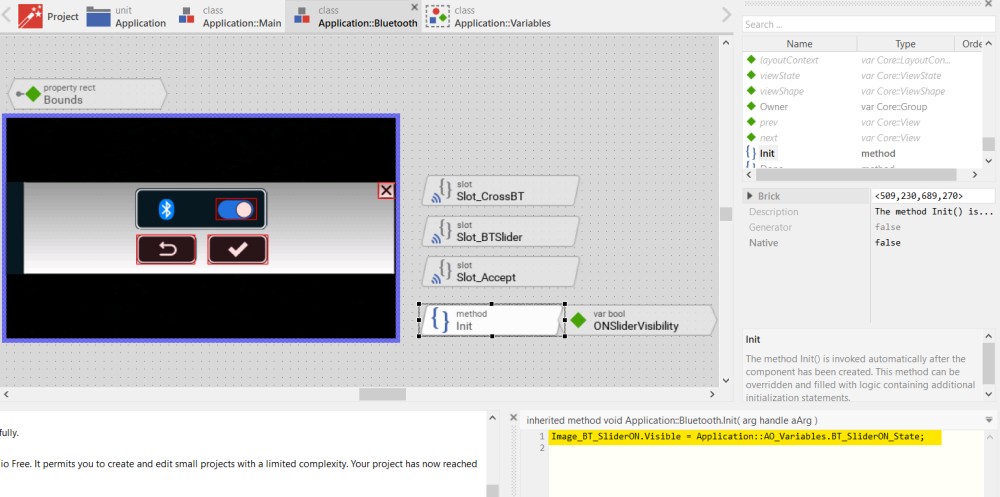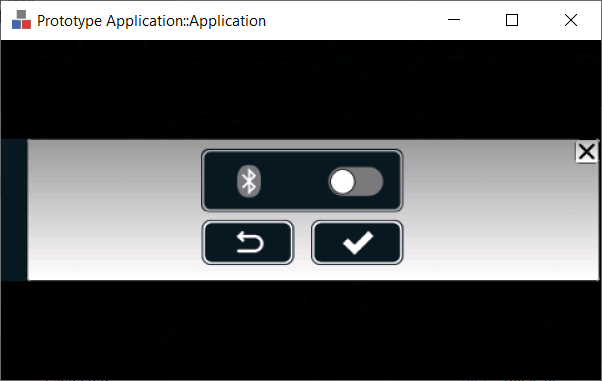Yes, exactly, I open dialog B when I close dialog A.
I will show you some pictures of my project to enlighten you, I am not savvy enough about the terminology and if I try to explain it to you with words I might end up making it more confusing.
This is 'dialog A' (I called it 'Bluetooth', for future references):

As I said, the Init() method is coded with the following line:
Image_BT_SliderON.Visible = Application::AO_Variables.BT_SliderON_State;
Application::AO_Variables is the autoobject of my Variables class, where I am storing all the global variables of my project. 'BT_SliderON_State' is one of these global variables, I use it to store whether my 'slider' ('Image_BT_SliderON') is on (true) or off (false).
When I touch the slider, the following image is shown:

And I want it to stay that way, because as soon as I touch the return arrow or the cross button a different dialog opens up, and when I go back to this dialog, the slider is back to being ON instead of OFF, which is how I left it.
The way I change dialogs by touching the screen is by coding a slot brick and assigning it to the touch handler. This is the code snippet I use for said slot:
if ( Touch_CrossBT )
{
SwitchToDialog( new Application::Buttons, null, null, null, null, null, null, null, null, null, false );
}
Thank you very much for your help Manfred, I really appreciate it.